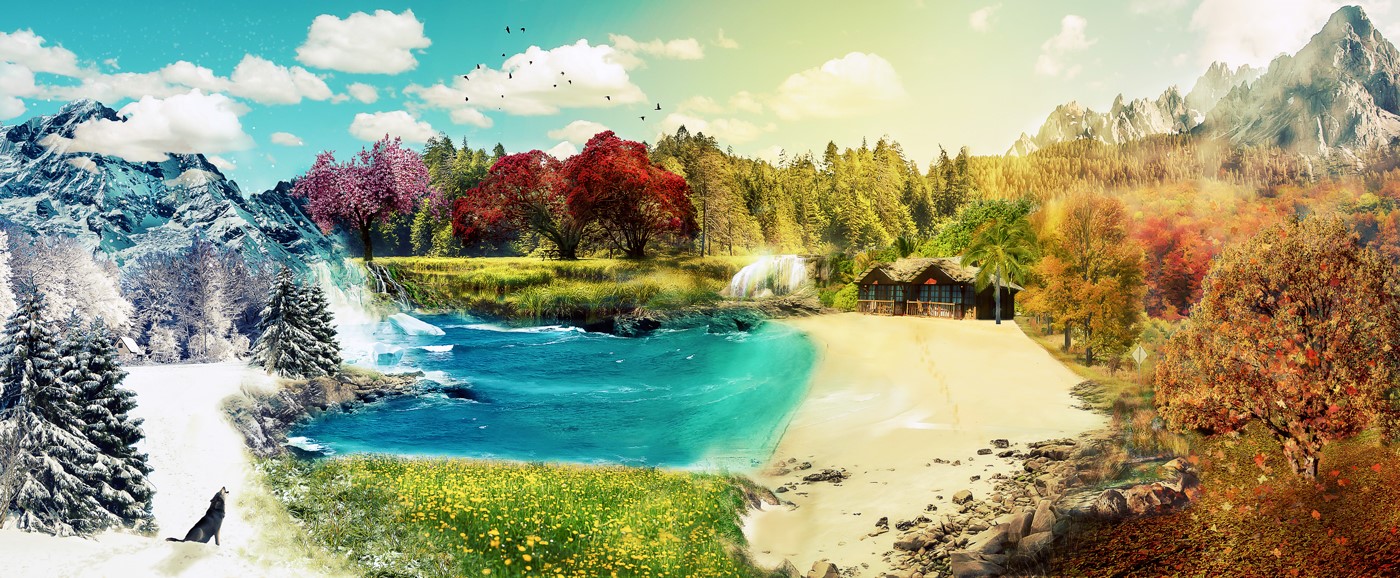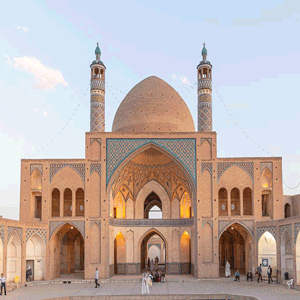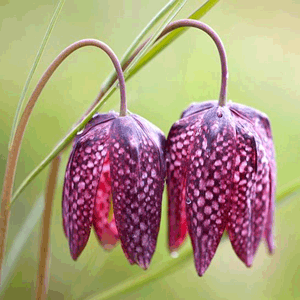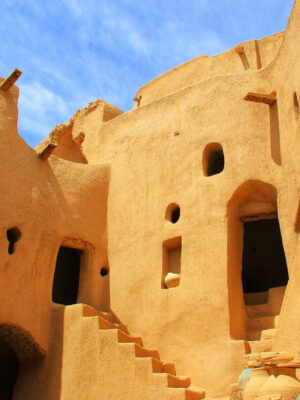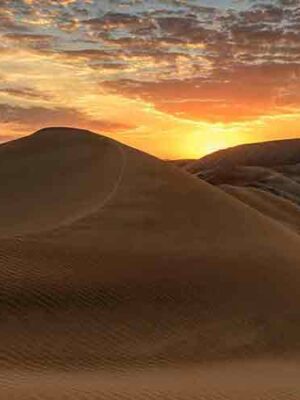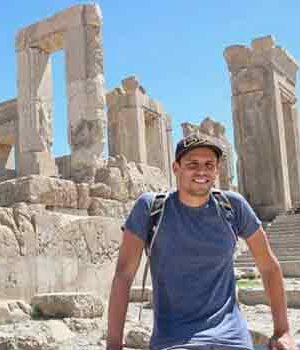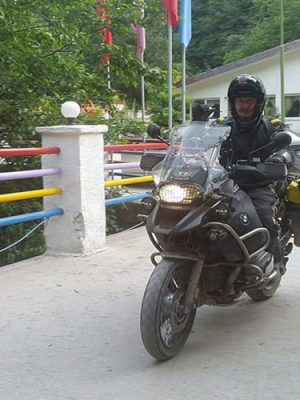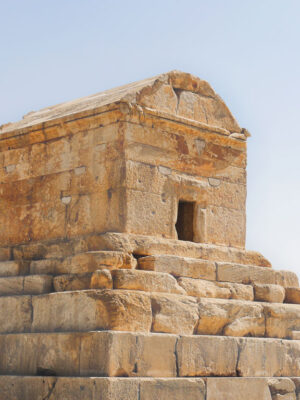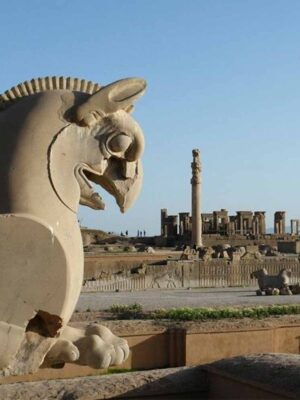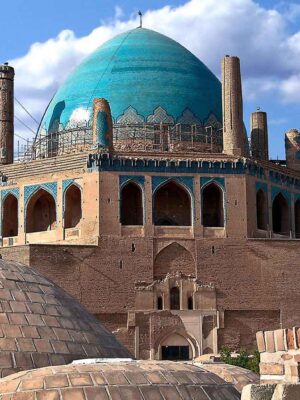Best Season to Travel to Iran
Best Season to Travel to Iran
Travel to Iran and the information related to this topic is the fact we are going to cover. Iran is a large country with a fluctuating climate, ranking eighteenth in terms of country size worldwide. Every region of the country experiences a different climate, from chilly winters in the west and northwest to sweltering summers in the south. If you’re a traveler and are wondering when to go to Iran, you can go there any time of the year. It all depends on your personal preferences for the seasons and the general purpose of your trip. Let’s take a look at Iran month by month to see what’s happening and when is the best time to travel there.
Iran’s peak tourist months are in March, April, and May, which means beautiful weather for sightseeing but also higher costs, particularly in April. Early June may provide you better savings opportunities.
Best time to travel to Iran
The main occasion in the Iranian calendar is the ancient celebration of Nowruz, which marks the beginning of spring and the Persian New Year. It typically begins on March 20 and lasts for around two weeks. Travel to Iran outside of this period unless you intend to participate in the festivities, as it is a busy, pricey, and chaotic time in Iran with many locations closed for the festivities.
A new Persian year known as Nowruz will begin in two weeks on March 21. People are preparing to celebrate the start of spring as well as the holidays, of course. Prior to Nowrouz, Iranians shake their homes. That’s the phrase used for extensive house cleaning or renovations that occur in the beginning of the year. Streets are becoming busier as shoppers begin to buy for new outfits for the coming year. All families are making advance plans for their holidays as the country’s weather continues to improve. Before and during Nowruz, all transportation services are increased by threefold. All costs considerably increase, and crowds at tourist destinations increase. For this season, preparation in advance is crucial. Foreign visitors are traditionally advised not to travel to Iran around Nowruz because to the high costs and crowded tourist attractions, unless you also plan to celebrate it.
Be familiar about the calendar and month of Iran
The months of late November, December, January, and February are quite cold, particularly in the north and west mountain ranges. The months of July and August are extremely hot, frequently reaching the 40s. This is especially painful because women are required to wear headscarves and shorts and t-shirts are forbidden.
The Islamic calendar’s month-long celebration of Ramadan varies a little bit yearly. It starts on May 15 in 2018 and May 5 in 2019, respectively. When you travel to Iran, Ramadan prohibits eating or drinking in public between dawn and dusk, yet certain establishments may covertly serve international tourists, and you are allowed to eat in your home or in a moving car. Be prepared to eat after it becomes dark.

Don’t lose September and October
Travel to Iran is also enjoyable in the months of September and October, when costs may be a little lower than in the spring.
Be aware that Iran celebrates the weekend on Thursday and Friday and that Friday is the Islamic holy day of rest. Sunday and Saturday are regular workdays.
Iran is best visited between March and May and September and October. You’ll stay out of the sweltering summer sun and the chilly, snow-covered winters. Prices do increase around these times, especially in April. If you’re prepared to dress for the weather, June and October offer slightly better deals. Iran’s two hottest months are July and August, with a dry heat index of around 30°C. Iran celebrates a number of holidays that may cause travel issues. Price increases and crowded hotels are associated with Nowruz, which begins on March 21 and lasts for two weeks. Eating and drinking in public is prohibited during the daytime throughout the month of Ramadan (exact dates vary), and religious restrictions are carefully upheld in travel to Iran.
The warmth of the welcome travelers receive there is utterly ignored by what you read in the news, as Iran holidays fully show, dispelling the notion that this alluring nation should be off-limits to Westerners. Through Tehran, Yazd, Shiraz, and Persepolis, their small group and custom-made holidays in Iran explore this remarkable country’s cultural legacy while retracing the history of the Silk Road and letting you savor the flavors of its cuisine. Travel by luxury train or overland, accompanied by local experts eager to show you Iran behind the headlines, as you pass serene tea plantations, historic mosques embellished with stunning mosaics, and crumbling palaces.
Iran is one of the oldest countries in the world
One of the oldest places in the world that have been inhabited continuously is Iran. Iran continues to exercise significant influence in the region despite the huge Persian Empire having been destroyed in the Iranian Revolution of 1979, which is sometimes seen negatively by Western nations. However, Iran is not its government, and wherever you travel, you’ll experience the warmest welcomes from individuals eager to show you the reality of Iranian life outside of the news headlines. The finest ways to connect the cultural dots are typically on walking and cycling vacations.
There are three important cities to visit in Iran if your time there is restricted. The majority of routes will include Shiraz and connect Tehran, the country’s secular and liberal capital, with Esfahan, to the south (from where the ruins of Persepolis are the obvious next step). The most stunning city in Iran is Esfahan, which is home to numerous tiny factories that produce carpets, ceramics, and woodwork. Although Shiraz, formerly the nation’s capital, hasn’t produced any wine since the Iranian Revolution of 1979, its gorgeous gardens, poets’ tombs, and ornate Islamic architecture nevertheless have an entrancing allure.
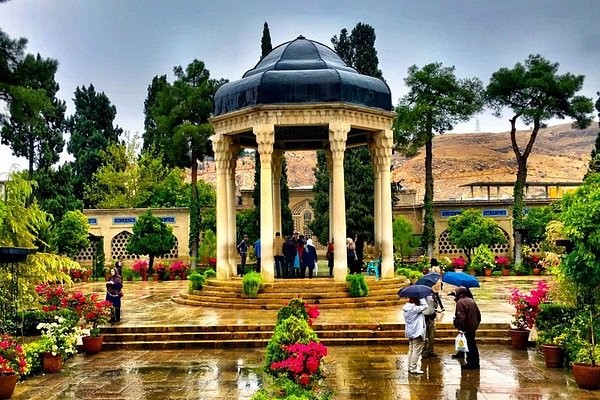
Guidance to travel to Iran, Four Seasons
You need to know the fact that Iran has different locations to visit. This will help you to
Spring
The high season for travel to Iran begins in March and lasts through the end of May. Spring is a pleasant time to visit. Why? Because it is neither too hot nor too cold during these months, these are the best times to visit around Iran. You may wish to book your hotel or other accommodations in Iran well in advance of your trip because the costs will be higher this time and there will be more tourists. The ideal time to take part in traditional Iranian tours and observe festivals like Nowruz and Golab Giri is right now.
One of the best seasons to experience Iranian culture is in the spring. Examine the detailed cultural tours offered in Iran and choose the adventures and tales you want to tell in the upcoming spring.
In the spring, temperatures rise to a largely tolerable level. March brings cool temperatures along the coast, slightly warmer temperatures in the south, and lower temperatures in the mountains. The temperature never falls below 10 °C, even in the highlands.

Summer
Precipitation slightly declines as summer gets started. Because of the rising temperatures throughout the country and the requirement that you be able to handle the heat in order to travel to Iran cities like Shiraz, Yazd, and Kashan, there will be good discounts on trips and experiences from June to August. If you decide to go sightseeing in the early morning or in the evening, you may still explore places like Kerman, Yazd, and Shiraz despite the high temperature.
You can also travel to the northern part of Iran to hike and climb on top of the Alborz mountains to avoid the heat. Alamut, Tochal, and Mount Damavand are a few of Iran’s well-liked mountaineering and trekking locations. Booking your lodging and tickets in advance is advised because Iranian tourists who wish to take advantage of the nice summer weather are also active during this time.
Autumn
The wettest month of the year is October, which brings rains to the nation. The weather is ideal for a fantastic trip across Iran in October, when you can easily avoid throngs of tourists due to the temperature range of 22 to 25 °C. But once November gets underway, the temperature drops.
In Iran, October is the perfect month to take a tour of the desert and explore the sand dunes. You have a live desert journey with Autumn. The shoulder season for traveling to Iran during this time will result in lower costs for lodging and travel arrangements. You may appreciate the country without being bothered by annoying crowds because the rush will have subsided. Fall is typically a fantastic season to travel to Iran.

Winter
Few visitors come to Iran between November and February because of the returning cold, unless they want to go skiing in Tochal, Shemshak, or Dizin Ski Resort. The finest time to go skiing in Iran’s north or sightseeing in the still-comfortable and warm south is during this season. If you enjoy traveling in the winter, Tehran and northern Iran get so cold that you will need to pack warm clothing. If you are interested in saving money, now would be the greatest time for you to do it since many hotels and resorts will offer fantastic bargains for those who want to visit during this season. The southern cities and islands, such as Chabahar and Kish.
Final Thoughts
After Nowruz, domestic travel drastically decreases. Although it will get hot in the south, the rest of Iran will continue to experience decent weather for the next two months. Prices drop after Nowruz and even further in the first few days of June. Additionally, there aren’t many people at the tourist attractions. The optimum period for international tourists to travel to Iran is from late March to early June.
Best Season to Travel to Iran
Best Season to Travel to Iran
Travel to Iran and the information related to this topic is the fact we are going to cover. Iran is a large country with a fluctuating climate, ranking eighteenth in terms of country size worldwide. Every region of the country experiences a different climate, from chilly winters in the west and northwest to sweltering summers in the south. If you’re a traveler and are wondering when to go to Iran, you can go there any time of the year. It all depends on your personal preferences for the seasons and the general purpose of your trip. Let’s take a look at Iran month by month to see what’s happening and when is the best time to travel there.
Iran’s peak tourist months are in March, April, and May, which means beautiful weather for sightseeing but also higher costs, particularly in April. Early June may provide you better savings opportunities.
Best time to travel to Iran
The main occasion in the Iranian calendar is the ancient celebration of Nowruz, which marks the beginning of spring and the Persian New Year. It typically begins on March 20 and lasts for around two weeks. Travel to Iran outside of this period unless you intend to participate in the festivities, as it is a busy, pricey, and chaotic time in Iran with many locations closed for the festivities.
A new Persian year known as Nowruz will begin in two weeks on March 21. People are preparing to celebrate the start of spring as well as the holidays, of course. Prior to Nowrouz, Iranians shake their homes. That’s the phrase used for extensive house cleaning or renovations that occur in the beginning of the year. Streets are becoming busier as shoppers begin to buy for new outfits for the coming year. All families are making advance plans for their holidays as the country’s weather continues to improve. Before and during Nowruz, all transportation services are increased by threefold. All costs considerably increase, and crowds at tourist destinations increase. For this season, preparation in advance is crucial. Foreign visitors are traditionally advised not to travel to Iran around Nowruz because to the high costs and crowded tourist attractions, unless you also plan to celebrate it.
Be familiar about the calendar and month of Iran
The months of late November, December, January, and February are quite cold, particularly in the north and west mountain ranges. The months of July and August are extremely hot, frequently reaching the 40s. This is especially painful because women are required to wear headscarves and shorts and t-shirts are forbidden.
The Islamic calendar’s month-long celebration of Ramadan varies a little bit yearly. It starts on May 15 in 2018 and May 5 in 2019, respectively. When you travel to Iran, Ramadan prohibits eating or drinking in public between dawn and dusk, yet certain establishments may covertly serve international tourists, and you are allowed to eat in your home or in a moving car. Be prepared to eat after it becomes dark.

Don’t lose September and October
Travel to Iran is also enjoyable in the months of September and October, when costs may be a little lower than in the spring.
Be aware that Iran celebrates the weekend on Thursday and Friday and that Friday is the Islamic holy day of rest. Sunday and Saturday are regular workdays.
Iran is best visited between March and May and September and October. You’ll stay out of the sweltering summer sun and the chilly, snow-covered winters. Prices do increase around these times, especially in April. If you’re prepared to dress for the weather, June and October offer slightly better deals. Iran’s two hottest months are July and August, with a dry heat index of around 30°C. Iran celebrates a number of holidays that may cause travel issues. Price increases and crowded hotels are associated with Nowruz, which begins on March 21 and lasts for two weeks. Eating and drinking in public is prohibited during the daytime throughout the month of Ramadan (exact dates vary), and religious restrictions are carefully upheld in travel to Iran.
The warmth of the welcome travelers receive there is utterly ignored by what you read in the news, as Iran holidays fully show, dispelling the notion that this alluring nation should be off-limits to Westerners. Through Tehran, Yazd, Shiraz, and Persepolis, their small group and custom-made holidays in Iran explore this remarkable country’s cultural legacy while retracing the history of the Silk Road and letting you savor the flavors of its cuisine. Travel by luxury train or overland, accompanied by local experts eager to show you Iran behind the headlines, as you pass serene tea plantations, historic mosques embellished with stunning mosaics, and crumbling palaces.
Iran is one of the oldest countries in the world
One of the oldest places in the world that have been inhabited continuously is Iran. Iran continues to exercise significant influence in the region despite the huge Persian Empire having been destroyed in the Iranian Revolution of 1979, which is sometimes seen negatively by Western nations. However, Iran is not its government, and wherever you travel, you’ll experience the warmest welcomes from individuals eager to show you the reality of Iranian life outside of the news headlines. The finest ways to connect the cultural dots are typically on walking and cycling vacations.
There are three important cities to visit in Iran if your time there is restricted. The majority of routes will include Shiraz and connect Tehran, the country’s secular and liberal capital, with Esfahan, to the south (from where the ruins of Persepolis are the obvious next step). The most stunning city in Iran is Esfahan, which is home to numerous tiny factories that produce carpets, ceramics, and woodwork. Although Shiraz, formerly the nation’s capital, hasn’t produced any wine since the Iranian Revolution of 1979, its gorgeous gardens, poets’ tombs, and ornate Islamic architecture nevertheless have an entrancing allure.

Guidance to travel to Iran, Four Seasons
You need to know the fact that Iran has different locations to visit. This will help you to
Spring
The high season for travel to Iran begins in March and lasts through the end of May. Spring is a pleasant time to visit. Why? Because it is neither too hot nor too cold during these months, these are the best times to visit around Iran. You may wish to book your hotel or other accommodations in Iran well in advance of your trip because the costs will be higher this time and there will be more tourists. The ideal time to take part in traditional Iranian tours and observe festivals like Nowruz and Golab Giri is right now.
One of the best seasons to experience Iranian culture is in the spring. Examine the detailed cultural tours offered in Iran and choose the adventures and tales you want to tell in the upcoming spring.
In the spring, temperatures rise to a largely tolerable level. March brings cool temperatures along the coast, slightly warmer temperatures in the south, and lower temperatures in the mountains. The temperature never falls below 10 °C, even in the highlands.

Summer
Precipitation slightly declines as summer gets started. Because of the rising temperatures throughout the country and the requirement that you be able to handle the heat in order to travel to Iran cities like Shiraz, Yazd, and Kashan, there will be good discounts on trips and experiences from June to August. If you decide to go sightseeing in the early morning or in the evening, you may still explore places like Kerman, Yazd, and Shiraz despite the high temperature.
You can also travel to the northern part of Iran to hike and climb on top of the Alborz mountains to avoid the heat. Alamut, Tochal, and Mount Damavand are a few of Iran’s well-liked mountaineering and trekking locations. Booking your lodging and tickets in advance is advised because Iranian tourists who wish to take advantage of the nice summer weather are also active during this time.
Autumn
The wettest month of the year is October, which brings rains to the nation. The weather is ideal for a fantastic trip across Iran in October, when you can easily avoid throngs of tourists due to the temperature range of 22 to 25 °C. But once November gets underway, the temperature drops.
In Iran, October is the perfect month to take a tour of the desert and explore the sand dunes. You have a live desert journey with Autumn. The shoulder season for traveling to Iran during this time will result in lower costs for lodging and travel arrangements. You may appreciate the country without being bothered by annoying crowds because the rush will have subsided. Fall is typically a fantastic season to travel to Iran.

Winter
Few visitors come to Iran between November and February because of the returning cold, unless they want to go skiing in Tochal, Shemshak, or Dizin Ski Resort. The finest time to go skiing in Iran’s north or sightseeing in the still-comfortable and warm south is during this season. If you enjoy traveling in the winter, Tehran and northern Iran get so cold that you will need to pack warm clothing. If you are interested in saving money, now would be the greatest time for you to do it since many hotels and resorts will offer fantastic bargains for those who want to visit during this season. The southern cities and islands, such as Chabahar and Kish.
Final Thoughts
After Nowruz, domestic travel drastically decreases. Although it will get hot in the south, the rest of Iran will continue to experience decent weather for the next two months. Prices drop after Nowruz and even further in the first few days of June. Additionally, there aren’t many people at the tourist attractions. The optimum period for international tourists to travel to Iran is from late March to early June.






